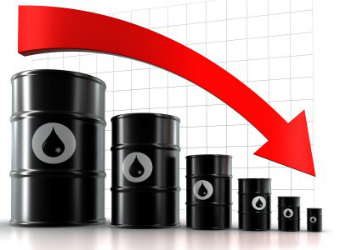Oil prices fell for a third day on Tuesday, hit by concerns that a political rift between Qatar and several Arab states would undermine an OPEC-led push to tighten the market.
Persistent gains in U.S. production also dragged on benchmark crude prices, traders said.
Brent crude was trading at $49.27 per barrel at 0424 GMT, down 20 cents, or 0.4 percent from its last close. That is down 9 percent from the open of futures trading on May 25, when an OPEC-led policy to cut oil output was extended into the first quarter of 2018.
U.S. West Texas Intermediate (WTI) crude had dropped 18 cents, or 0.2 percent, to $47.21 per barrel. That is down about 8 percent from the May 25 open. Leading Arab powers including Saudi Arabia, Egypt, and the United Arab Emirates cut ties with Qatar on Monday, accusing it of support for Islamist militants and Iran.
Leading Arab powers including Saudi Arabia, Egypt, and the United Arab Emirates cut ties with Qatar on Monday, accusing it of support for Islamist militants and Iran.
Steps taken include preventing ships coming from or going to the small peninsular nation to dock at Fujairah, in the UAE, used by Qatari oil and liquefied natural gas (LNG) tankers to take on new shipping fuel.
Analysts said that the current dispute goes much deeper than a similar rift in 2014.
“The measures by the anti-Qatar alliance signal commitment to forcing a complete change in Qatari policy or creating an environment for leadership change in Doha … Saudi Arabia and its allies will not accept any solution short of (Qatari) capitulation,” political risk consultancy Eurasia Group said in a note.
With oil production of about 620,000 barrels per day (bpd), Qatar’s crude output ranks as one of the smallest among the Organisation of the Petroleum Exporting Countries (OPEC), but tension within the cartel could weaken an agreement to hold back production in order to prop up prices.
Greg McKenna, chief market strategist at futures brokerage AxiTrader, said that the boycott of Qatar meant there was “a real chance” that OPEC solidarity surrounding its production cuts may fracture.
Although Qatar is a small oil producer, other OPEC states could see such anaction as a reason to stop restraining their own output, traders said.
Worries over the outlook for OPEC’s drive to rein in production come amid bulging supplies from elsewhere, especially the United States.
U.S. crude production has jumped more than tenpercent since mid-2016 to 9.34 million bpd, levels close to top producers Russia and Saudi Arabia.
“The relentless increase in U.S. oil production appears to have the market worried that the OPEC cuts will be completely nullified by the increased U.S. production,” William O’Loughlin, analyst at Australia’s Rivkin Securities, wrote in a note to clients on Tuesday.
Source: Reuters



